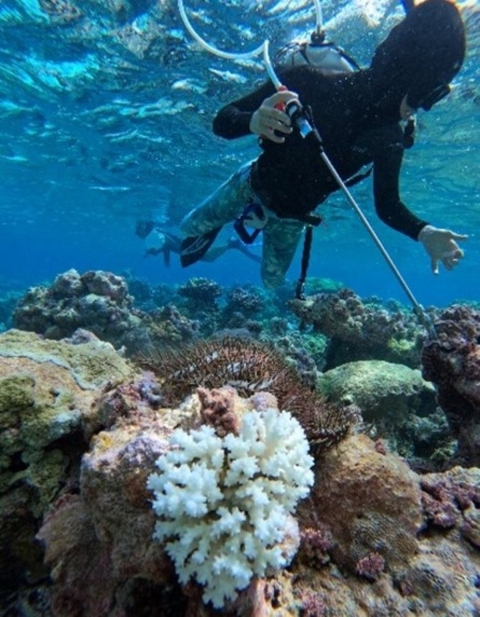About Us
The Panama City Fish and Wildlife Conservation Office is part of a network of field stations located throughout the nation that works to conserve fish and aquatic resources. Biologists from the Arctic Circle to the Florida Keys work to restore native species, including protect imperiled species and their habitats; monitor and control invasive species invasive species
An invasive species is any plant or animal that has spread or been introduced into a new area where they are, or could, cause harm to the environment, economy, or human, animal, or plant health. Their unwelcome presence can destroy ecosystems and cost millions of dollars.
Learn more about invasive species ; and evaluate native fish stocks and their habitats.
Our field stations provide technical assistance to tribes; collaborate on fishery restoration with the National Fish Hatchery System; supervise subsistence use by rural Alaskans on federal lands; conduct scientific studies into fishery problems; restore habitat through the National Fish Passage Program and the National Fish Habitat Action Plan; and they collaborate with partners to conserve migratory fishes that cross multiple jurisdictions.
The Panama City Fish and Wildlife Conservation Office promotes native self-sustaining ecosystems through leadership in fish restoration, fisheries research and monitoring, and non-native invasive species prevention, management, and control.
Our Mission
Since 1871, the U.S. Fish and Wildlife Service has been applying science-based approaches to conservation challenges. We work with our partners and engage the public to conserve, restore, and enhance fish and other aquatic resources for the continuing benefit of the American people. Conservation is at the heart of what we do, and we recognize that we do this work for the American people--both the present generation who benefit today and future generations who will inherit our legacy of conserving America's aquatic resources.
The Panama City Fish and Wildlife Conservation Office has aided in the recovery of listed threatened and endangered species and mitigate at-risk species from becoming listed. We work with our partners: state and federal agencies, private landowners, non-governmental organizations (NGO), and industry to restore, monitor, and maintain aquatic and wildlife resources. We offer various types of technical assistance and work toward the conservation and restoration of upland and aquatic habitats in the Southeast region, ensuring these resources are here for future generations.
Our History
The first U.S. Fish and Wildlife Service Bureau of Sport Fisheries and Wildlife office was established in Panama City, Florida in 1968. Although the original decision to open a station in Panama City was to initiate a marine sport fisheries laboratory, several programs were also assigned to the new station in 1968. These included law enforcement, fisheries research, and fisheries services. All three offices were co-located until 1972, when marine fisheries research transferred to the U.S. Department of Commerce.
In January 1987, the office was reorganized to combine Ecological Services and Fish and Aquatic Conservation (FAC). The Panama City Field Office became the first combined Ecological Services and FAC office in the country. The combination of both programs has benefited the missions of each program by pooling resources (time, equipment, and funding) to further conservation in northwest Florida and its watersheds in Alabama, Georgia, and Florida.
Other Facilities in this Complex
The Panama City FWCO is currently co-located with the Florida Ecological Services Panama City Field Office. These two offices have been collocated since 1987.




